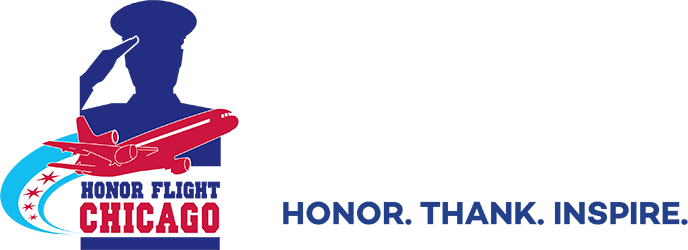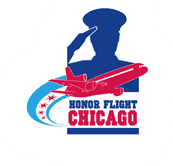Air Force Vietnam War Rolling Meadows, IL Flight date: 04/09/25
By David Adams, Honor Flight Chicago Veteran Interview Volunteer
Airman Bob Rein is onboard a WC-135B weather ship as it skims over the polar ice cap at 5,000 feet. Too fast and high to see polar bears. Collecting air samples from Chinese and Russian nuclear tests is today’s mission. Landing in the northernmost United States military airfield in Thule, Greenland completes the sortie. Bob is thirsting for Danish beer and solid sleep in transient crew quarters converted from commercial meat lockers. He could not have dreamed of this adventure growing up in Detroit.
Robert A. Rein (Bob) was born and raised in Detroit. Graduating from high school in 1968 he vividly remembers events of that spring. He could hear the rumbling of tanks from his home. Military forces had been mobilized to confront the Detroit riots following the assassination of Martin Luther King, Jr. His parents cautioned him to remain well clear. In the fall he started his college education at New Mexico Institute of Mining and Technology, Socorro, NM. In early 1969 he felt “a disturbance in the force” indicating that he was going to get “the telegram” drafting him into the Army. He beat the Army to the punch, enlisting in the Air Force and entering service in Albuquerque on February 19, 1969. Bob’s family had a military history. His father served in the Army Air Corps during World War II as a B-17 gunner in either the belly or waist position. But for his dad’s suffering a ruptured eardrum during aviation training he would have been a pilot.
He says basic training at Lackland AFB, San Antonio, TX “didn’t bother me much”. Housing in WWII barracks with building-long bays was a throwback to earlier days. Arriving in Texas during late winter, he avoided the “horrendous” heat which descended at the end of his training in March. He was relieved to report to Chanute AFB, Rantoul, IL for specialized training where the weather proved more user friendly. Bob’s assignment to weather school was not his choice, of course, rather that of the Air Force. He had scored very well in tests, however. He arrived on base the day before Easter, April 5, 1969. Commander’s Week followed which meant KP for new recruits, but Bob says, “I was a lucky person” not getting assigned to wash floors.
During the next four-plus months, Bob learned the basics of weather including instrumentation, weather radar, chart generation and interpretation. Testing proved incessant. He admits to failing one test due to complacency, maybe. Advised that if he failed that test again, his assignment would be changed to such specialties as military police or firefighting. He scored 100% on the retake and graduated as a full-fledged weather observer.
Bob’s post-school assignment was to Malmstrom AFB, Great Falls, Montana and to one of its Wing weather detachments. Instead of collecting and forecasting weather for the base itself his unit collected and forecast weather for the SAGE (Semi-Automatic Ground Environment) center, a NORAD component. Bob and his airman colleagues plotted weather maps covering Montana and its neighboring states north to and beyond the Arctic Circle. While attending to his Air Force detachment duties, he sought out additional weather training from the civilian agency NOAA. He learned to operate a radiosonde. A radiosonde is a battery-powered telemetry instrument, carried into the atmosphere by a weather balloon, that measures various atmospheric parameters and transmits them by radio to a ground receiver. Being certified as an operator paid dividends. Bob learned that the Air Force was looking for volunteers for a weather reconnaissance squadron with the qualification as a radiosonde operator. He had the needed qualification, applied, and was accepted. To transfer he needed to extend his enlistment because his expected tour at Yokota would have lasted beyond his then-existing service commitment. Bob readily agreed.
He was sent PCS to the 56th Weather Reconnaissance Squadron at Yokota, Japan. After taking a well-earned thirty-day leave, he flew from Travis AFB, CA to Japan hopscotching across the Pacific. He checked into his quarters on July 23, 1971, and was shaken awake the next morning by an earthquake which rattled his bed and metal locker. Bob quickly learned that the Japanese citizens were used to quakes and took a “ho-hum” attitude to this one.
The 56th WRS flew the WC-135B Constant Phoenix, a variant of the C-135 which itself is the military version of the Boeing 707 commercial airliner. Bob learned his craft by OJT. He flew with qualified “drop operators”, or “drops”, under whose tutelage he became expert in dropsondes. The instruments in the dropsondes captured a weather cross section of the atmosphere such as wind direction and speed. The squadron conducted routine weather missions at altitudes between 35,000 and 42,000 feet MSL over the ocean. Drops never occurred over land. Bob emphasizes that in the “vast tracks of the Pacific there were no forecasters”. This aspect of the squadron’s mission was essential. Its mission also involved atmospheric sampling and radiation detection work in support of nuclear test monitoring.
He reports that the WC-135B was specially modified to detect radioactive debris “clouds” in real time. To fulfill mission requirements the aircraft was equipped with external flow-through devices to collect particulates on filter paper and a compressor system for whole air samples collected in high-pressure holding spheres. One frequent mission profile involved flying from Yokota, Japan to Eielson AFB, Fairbanks, AK and return. Airborne refueling from KC-135 tankers was routine. From time-to-time Bob flew in the squadron’s WC-130 weather ship as an observer only.
Bob remembers many missions over-the-pole “chasing radioactive clouds” from Chinese and Russian nuclear tests. The flight profile required flying, at times, just 5,000 feet above the polar ice cap. The WC-132 landed at Thule AFB, Greenland (now Pituffik Space Base) to offload the collected samples, obtain crew rest, and refuel the airplane. Landings at Thule were “rough” since the runway is necessarily constructed over permafrost and seasonal heating caused it to buckle. He describes transient crew quarters at Thule as being actual “meat lockers” which fit the bill. They kept the cold on the outside. But the best part of Thule was buying case upon case of Danish beer to bring back home to Japan, some to drink and others to sell.
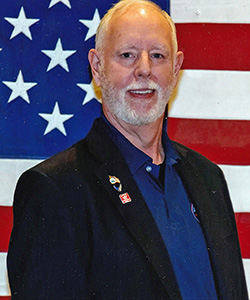
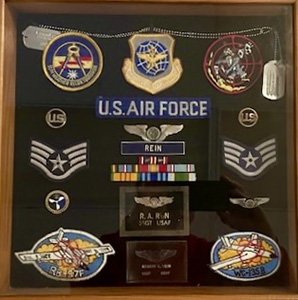
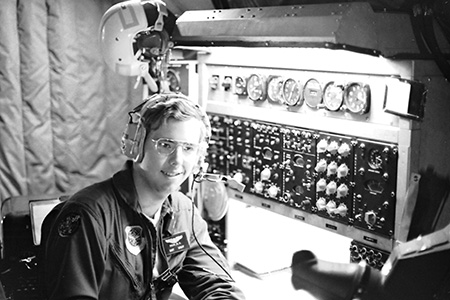
A couple of months after joining the 56th he learned that the squadron was scheduled to “close down”, be inactivated, in early 1972. He would need another weather assignment. One option was to stay at Yokota in the base weather office. The other was a transfer back to the States and the 55th Weather Reconnaissance Squadron at McClellan AFB, Sacramento, CA. He could keep flying! The decision was a no-brainer. The 55th had the same mission. Sorties included flights back to Japan. He remembers with a degree of glee that he “spent a lot of time in Hawaii” from which many sorties originated. Bob learned to sail growing up in Detroit, although sailing on Mamala Bay, Hawaii proved different from Lake St. Clair, MI. He would rent a sailboat at Hickam Harbor, gathered up some air crew members, and set off for a sailing trip to Waikiki.
Bob remembers the unique weather sorties he flew during his time as a crew member. They include these.
- SR-71 Blackbird refueling. The refueling tracks for the SR-71 Blackbird spy flights required altitudes where there was no turbulence.
- Fighter and bomber refueling tracks. The squadron collected the weather for the fighter and bombers transiting the Pacific enroute to or from Vietnam and Guam.
- Keyhole Satellite recovery. In the 1970’s and before Keyhole satellites, part of the U.S. military’s reconnaissance program, used photographic film and recovery capsules to return images to Earth. The satellite ejected the capsules then snagged mid-air by specially equipped aircraft such as the C-119 and C-130. Favorable weather insured successful recovery.
- Arclight Strike sorties. Accurate, favorable weather conditions for B-52 strike sorties targeting North Vietnam and Laos targets provided for maximum effectiveness.
- Kwajalein ballistic missile reentry. Missile tests launched from Vandenburg AFB, CA involved reentry in the Pacific near Kwajalein Atoll. The WC-135B flew a racetrack/circular path from near sea level upward to 30,000 feet to record weather conditions along the reentry path. Exiting the area before the ICBM entered was crucial!
- French atomic tests monitoring. The French government conducted a multitude of nuclear tests in the French Polynesia. The French banned American airplanes from landing at airfields in Pago Pago. Accordingly, the squadron flew roundtrip from Sacramento to Fiji to collect air and fallout samples. These flights lasted up to 23 ½ hours and required three crews on board.
- Typhoon penetration. Bob and his crew made multiple Typhoon penetrations in WC-135B from high altitude spiraling down to 5,000 feet in the eye then corkscrewing back up and out. Collected were sea level pressure, winds, temperature/humidity, all for storm forecast analysis.
On July 18, 1973, Bob received an honorable discharge as a SSgt (E5) serving four years and five months. He earned the Vietnam Service Medal, National Defense Service Medal, Air Force Good Conduct Medal, Air Force Longevity Service Award, Armed Forces Expeditionary Medal, and Republic of Vietnam Campaign Medal.
He returned to college graduating from Humboldt State University, Arcata, CA in 1978 with a Bachelor of Arts degree in biology. Next came Northwestern Dental School in Chicago from which he graduated in 1984. Until his retirement in 2019 he practiced continuously for 35 years. Bob has a son and three stepdaughters as well as 3 grandchildren and 9 step-grandchildren, whom he and his wife “spoil”. He is active with Holy Family Parish Community in Inverness.
What did his Air Force service mean to him? Bob says the military service “teaches you things you need to go through life. . . and instills some order into your life.” The bottom line: “I saw so much of the world. The people that I flew with, the flight crew, we got along great. I loved being an aircrew member, a tight band of dedicated officers and enlisted.”
Bob, you have more than earned your Honor Flight to Washington, D.C. Enjoy every moment!
